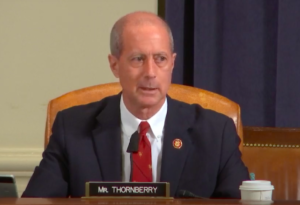
European Command (EUCOM) headquarters
President Trump proposed re-stationing 11,900 US troops from Germany back in July. The redeployment of some to other European countries, with others coming home produced an avalanche of criticism. Although Defense Secretary Mark Esper tried to put a strategic spin on the moves, the president promptly undermined him. Then, representatives of the administration went before Congress to make their case and got hammered in a rare bipartisan show of policy agreement. So, will any of these proposed troop movements actually be implemented?
What Was Proposed?
The administration wants to restation 11,900 servicemembers; 5,600 of whom would move out of Germany but stay within Europe; 6,400 would return the United States. Within Europe, European Command headquarters and the associated special operations command headquarters would move from Germany to Belgium, to be located with NATO headquarters. Three brigade-size headquarters, an air defense battalion, and an engineer battalion would move from Germany to Belgium. Some Air Force units would move to Aviano in Italy. Other moves were possible, like shifting Africa Command from Germany to Belgium. (Yes, Africa Command is physically in Europe.)
The Strategic Rationale

Mark Cancian
Esper attempted to give a strategic rationale that the changes were “wholly in line with the National Defense Strategy.” They would “enhance US and NATO deterrence of Russia, strengthen NATO, reassure allies, and improve US strategic flexibility in you calm operational flexibility.” National Security Adviser Robert O’Brien argued in an op-ed that large overseas bases were “obsolete” and that the restructuring would make US deployments more “forward and expeditionary.”
Trump’s Rationale
Unfortunately for Esper’s and O’Brien’s strategic rationale, the president told journalists at the White House that he had ordered the troop withdrawal because Berlin was “delinquent” by not spending enough on defense. “We don’t want to be suckers anymore.” This has been a Trump theme since the 2016 campaign and is thus no surprise, but it does undermine Esper’s attempt to give these troop movements a strategic basis.
The Reaction
Reaction to the White House proposal has been uniformly negative. A spate of critical commentaries appeared just after the announcement, describing the proposal as: “[harmful] to both national security and the fiscal situation of the United States;” “zero strategic sense;” and “no relationship to any strategic thinking or analysis.”

Rep. Mac Thornberry
The House Armed Services Committee hearing on the re-stationing produced sharp bipartisan criticism. The Pentagon representative could not answer many questions about the specifics. Congressman Thornberry, a top Republican who is retiring after this election, was blunt: “They clearly haven’t thought through the consequences… The folks at the Pentagon are trying to put lipstick on a pig.” The Democrats were even more pointed.
Related Troop Movements
Although not technically a part of this package, the Trump administration has considered other troop movements within NATO, such as moving forces into Eastern Europe and the Baltic states. Poland as been particularly eager to get US troops stationed locally, sometimes mocked as “Fort Trump.” The Baltic countries have rotational troop presence now and would like to get something more permanent since they face Russia directly. Romania and Bulgaria have also expressed interest. The United States has gradually improved infrastructure in Eastern Europe through the European Deterrence Initiative.
A key point in this debate, which has not been discussed much in public, is that re-stationing military forces is extremely expensive. The US military is not like the Roman legions, which could build a temporary camp overnight and build a permanent camp with their own resources in a few weeks. US military forces require permanent barracks, dining facilities, motor pools, headquarters buildings, gyms, protected perimeters and roadways.
If the new facilities include dependents, as is likely, then the base needs to have family housing, commissaries, exchanges, schools, and daycare centers. Even if the host country provides the real estate, as they customarily do, these facilities can cost billions of dollars. Although Secretary Esper said the cost would be in the single-digit billions, that’s probably optimistic. To give one relevant example: moving 5,000 Marines from Okinawa to Guam (admittedly a high-cost location) will cost $8.7 billion.
With those costs in mind, let’s divide the proposed troop movements into three pieces and examine each: movement around central Europe, movement into Eastern Europe, movement back to the United States.
Moving Around Central Europe
The strategic rationale for movement around central Europe is weak. Moving headquarters from Germany to Belgium is not only expensive but is likely to be counterproductive. It puts all the major US headquarters in one country and makes them hostage to the vicissitudes of that country’s political environment. Old-timers may remember that after the 2003 invasion of Iraq, some Belgian legislators proposed charging Bush administration officials as war criminals for contravening international law. Belgium backed down when then-Sec. Rumsfeld threatened to move the US headquarters elsewhere.
Although Aviano, where the Air Force units would go, is already a major US base and closer to hotspots in the Mediterranean, it is no closer to Russia. Esper added a weak rationale that it was a little closer to the Black Sea, where some incidents have occurred, but that is not where the greatest danger lies.
Because of the weak strategic rationale and high cost, Congress is unlikely to provide any funds for this move. If Joe Biden is elected, his administration would certainly kill this plan.
Movement To Eastern Europe
The strategic rationale here is strong. The most imminent and dangerous threats to NATO nations are to the East, especially the Baltic states and Poland. Forces in Germany would need to transit a lot of territory to get to likely conflict zones. Such transits have been a logistical nightmare for NATO exercises and, even in wartime, might face many impediments during a situation when time is critical. Thus, moving at least some forces east makes sense. This is particular true since Poland, for one, has recently agreed to cover many of the costs.
Back to the United States
There is a rationale, although weak one, that moving troops to the continental United States would get them closer to the Pacific, which has higher priority. However, the national defense strategy, and likely any Biden administration strategy, focuses on both Russia and China. Moving forces away from Russia would be inconsistent with such a dual focus.
Further, bases in the United States that can accommodate the returning field units are mostly full. Though there might be the odd building available, for the most part, a whole new set of facilities would need to be built. So, the move would cost billions.
The only way such a move would make sense is to not move the troops at all but to disband the units as part of a downsizing of the Army and a re-focus of the defense budget to high tech weapons. Many strategists have proposed just such an approach. The Obama administration wanted to cut the active-duty Army to 450,000, about 37,000 below where it is today. A Biden administration, and conceivably a second Trump administration, might do the same.
Northrop sees F-16 IVEWS, IBCS as ‘multibillion dollar’ international sales drivers
In addition, CEO Kathy Warden says the company sees a chance to sell up to five Triton UAVs to the NATO alliance.


























